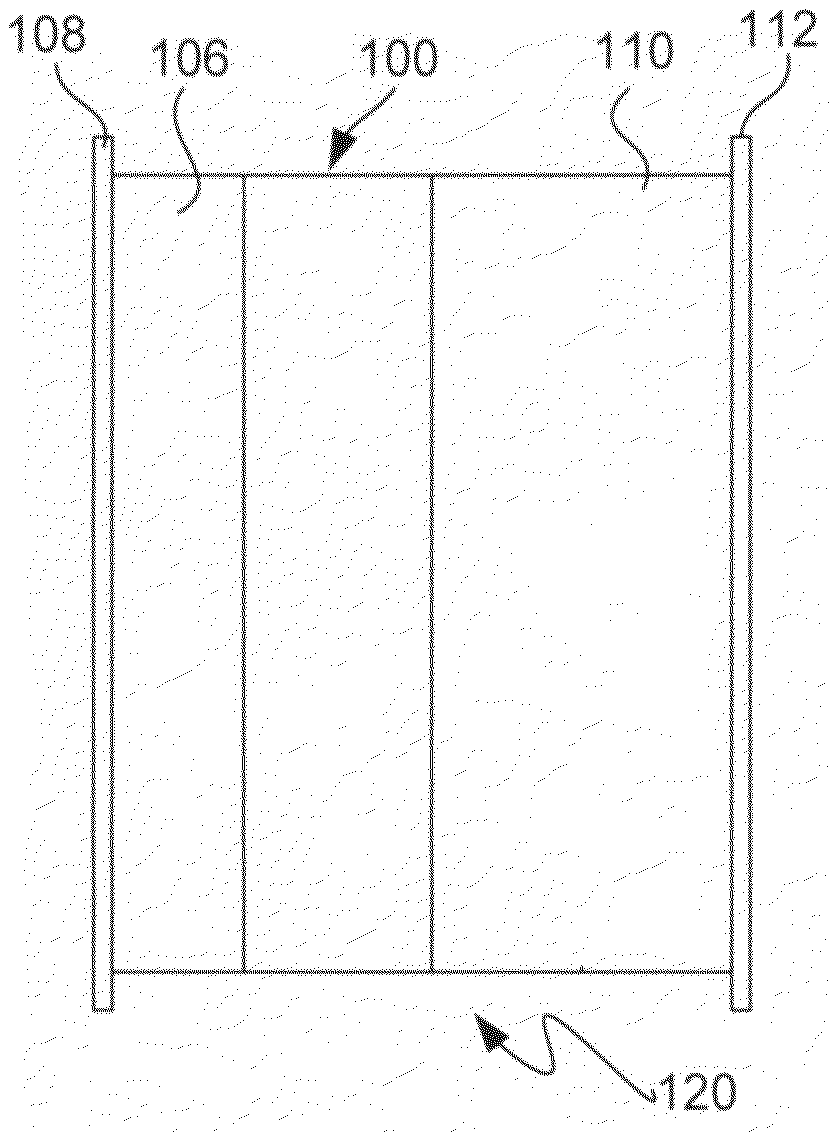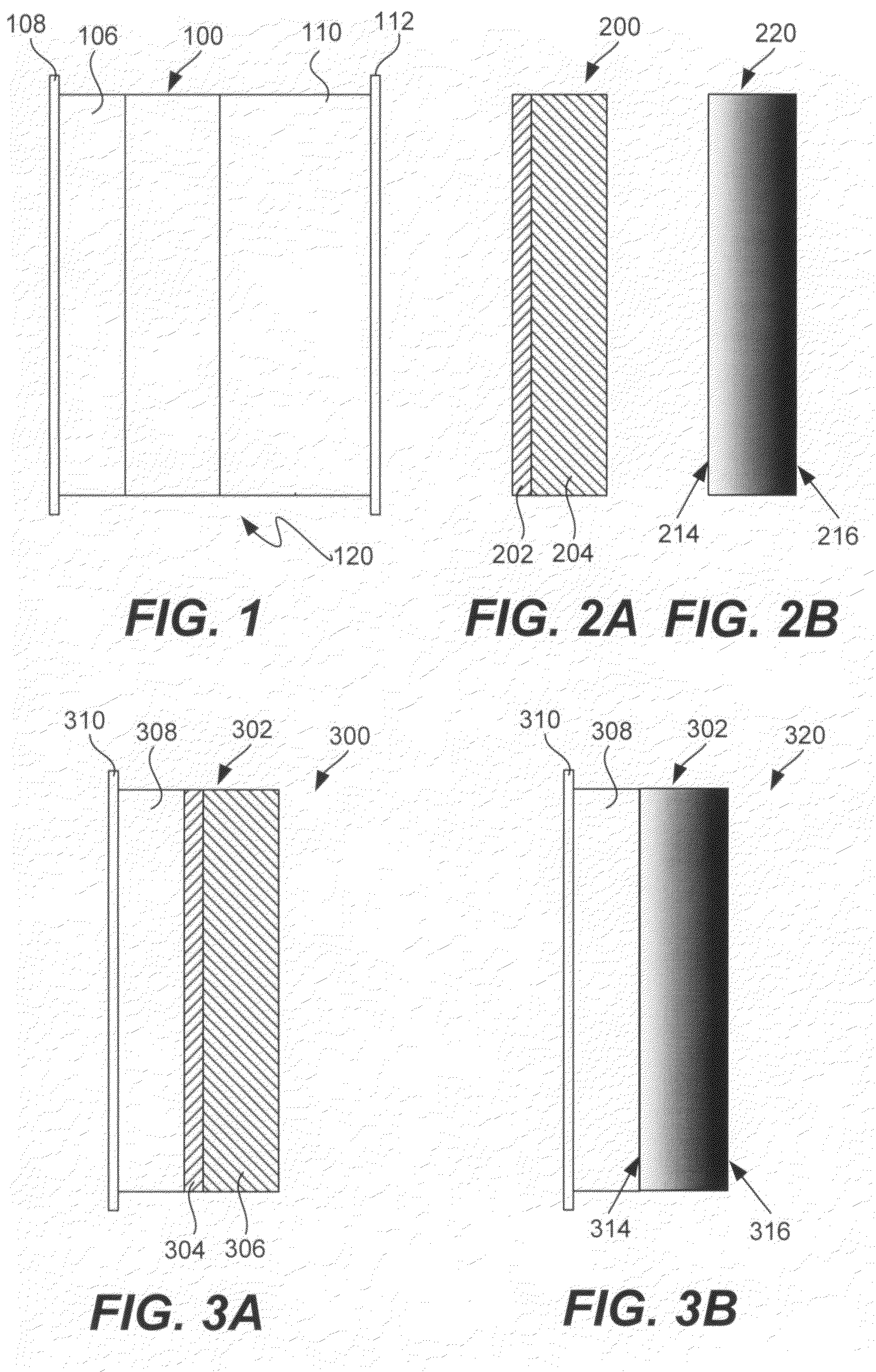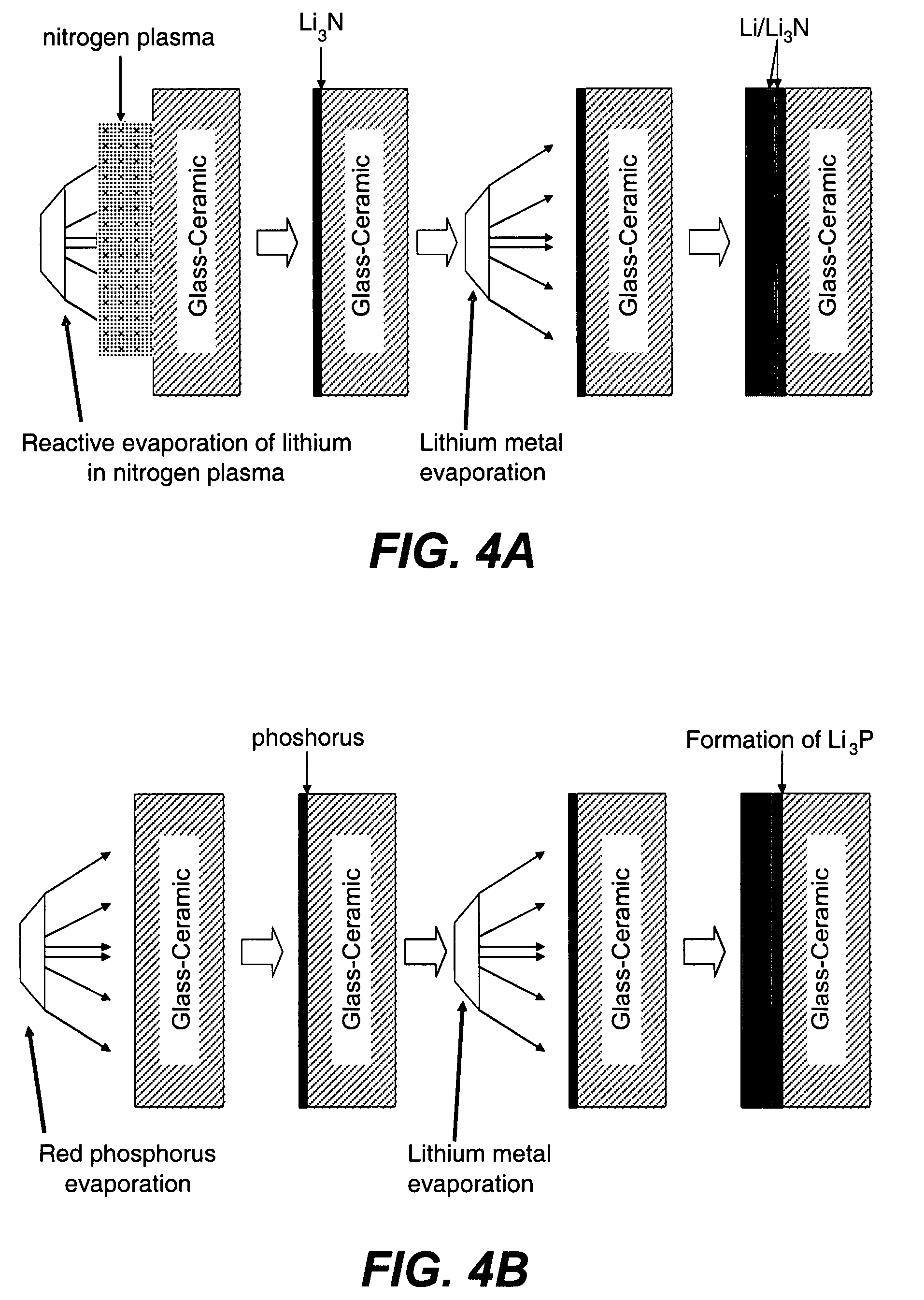Active metal/aqueous electrochemical cells and systems
a technology of electrochemical cells and active metals, applied in the field of active metal electrochemical devices, can solve the problems of lithium metal reacting violently with water, and even more violently with aqueous, and prior experiments showing these results are unknown, and achieves the effect of high corrosive to lithium, high degree of flexibility, and no impact on anode stability or performan
- Summary
- Abstract
- Description
- Claims
- Application Information
AI Technical Summary
Benefits of technology
Problems solved by technology
Method used
Image
Examples
example 1
Li / Water Cell
[0159]A series of experiments were performed in which the commercial ionically conductive glass-ceramic from OHARA Corporation described above was used as the outer layer (second composite layer) of a protective membrane against the aqueous environment of the electrolyte and cathode (water). These metal oxide Li conductors are stable in aqueous environments, but are unstable to lithium metal. In order to protect the OHARA membrane against metallic lithium, LiPON was used. The OHARA plates were in the range of 0.3 to 1 mm in thickness. The LiPON coating was in the range of 0.1 to 0.5 microns in thickness, and was deposited onto the OHARA plate by RF sputtering.
[0160]On top of the LiPON coating, a thin coating of Ag was formed by vacuum evaporation to prevent the reaction of hot evaporated lithium with the LiPON film. The Ag films were in the range of 200 to 1000 Å in thickness. LiPON can react with highly reactive Li from the vapor phase during Li vacuum deposition. Vacu...
example 2
Li / Seawater Cell
[0163]A lithium / sea (salt) water cell similar to the cell in the Example 1, was built. In this experiment, the Li(Ag) / LiPON / OHARA protected anode was used in a cell containing a “seawater” as an electrolyte. The seawater was prepared with 35 ppt of “Instant Ocean” from Aquarium Systems, Inc. The conductivity of the seawater used was determined to be 4.5 10−2 S / cm. FIGS. 22A and B show discharge (potential-time) curves at discharge rates of 0.2 mA / cm2 and 0.5 mA / cm2, respectively. The results indicate an operational cell with good performance characteristics, including a stable discharge voltage. It should be emphasized that in all previous experiments using an unprotected Li anode in seawater utilization of Li was very poor and at low and moderate current densities similar to those used in this example such batteries could not be used at all due to the extremely high rate of Li corrosion in a seawater (over 19 A / cm2).
example 3
Li / Seawater Cell with Large Capacity Anode
[0164]A lithium / sea (salt) water cell with a Pt wire cathode and a large capacity Li(Ag) / LiPON / glass-ceramic (OHARA Corp.) protected anode was built. Following deposition of the Ag film onto the LiPON on the OHARA plate, 50 um thick Li foil from Cyprus Foote Mineral Co. was pressed onto the Ag film to fabricate a thick protected Li anode. A Carver hydraulic press located in a dry room was used for the pressing operation. The applied pressure was around 800 kg / cm2, and duration of pressing was 10 minutes. The Li surface was polished with a Tyvec fabric just before pressing onto the Ag film. The Ag film reacted with the Li foil forming a strong reaction bond. The seawater electrolyte composition was the same as in the previous example.
[0165]FIG. 23 shows a discharge (potential-time) curve at a discharge rate of 0.3 mA / cm2. The cell exhibited long discharge. Discharge capacity delivered to the cut-off voltage of 2.0 V corresponded to the Li thi...
PUM
| Property | Measurement | Unit |
|---|---|---|
| voltage | aaaaa | aaaaa |
| breakdown voltage | aaaaa | aaaaa |
| ionic conductivity | aaaaa | aaaaa |
Abstract
Description
Claims
Application Information
 Login to View More
Login to View More - R&D
- Intellectual Property
- Life Sciences
- Materials
- Tech Scout
- Unparalleled Data Quality
- Higher Quality Content
- 60% Fewer Hallucinations
Browse by: Latest US Patents, China's latest patents, Technical Efficacy Thesaurus, Application Domain, Technology Topic, Popular Technical Reports.
© 2025 PatSnap. All rights reserved.Legal|Privacy policy|Modern Slavery Act Transparency Statement|Sitemap|About US| Contact US: help@patsnap.com



